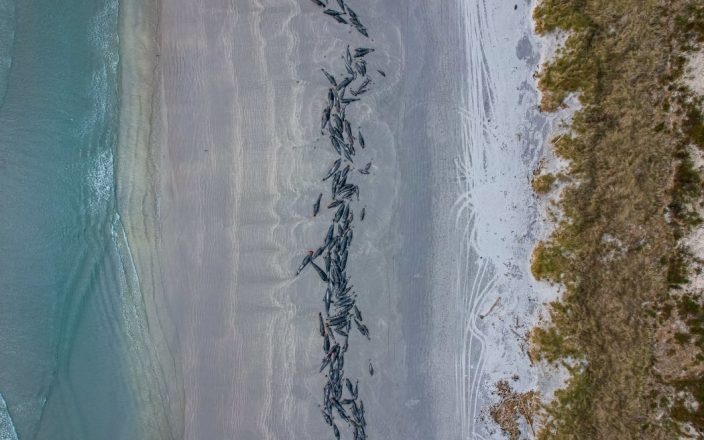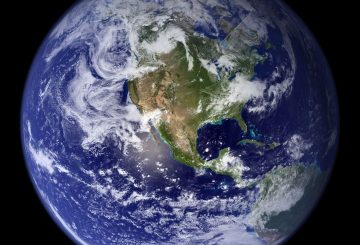1週間足らずの間に2匹のクジラの大量座礁が発生したことについて、市長は信じられないと述べています。
10月7日、チャタム島で約250頭のゴンドウクジラが座礁し、10月10日には約4km南のピット島ではさらに250頭が座礁したと推定されています。
この規模の座礁事故は、2017年に南島のフェアウェル・スピットで発生したのが最後で、推定600~700頭のクジラが座礁しています。
チャタム諸島のモニーク・クルーン市長は、すべてのストランディングが動揺をもたらすと述べました。
「ちょっとしたショックで、人々は大量の損失についてかなり悲しい気持ちになっていると思います。実際には異常なことで、定期的に起こっていることは認識していますが、このように2つの大規模な座礁があることは少し信じられません。」
ホエールレスキューの共同設立者であるイングリッド・ヴィッサー氏は、ニュージーランドではクジラの座礁が多発しているにもかかわらず、何が原因でクジラが海岸に打ち上げられたのかについてはまだほとんど分かっていないと述べました。
「私は、このような出来事が起こっていることは絶対的な悲劇だと思います。ニュージーランドは、クジラの座礁の長い歴史がありますが、いまだにその理由がわからず、これらの動物についての基本的なことさえわかっていないのです。」
オークランド大学海洋生態・保全生物学教授のロッシェル・コンスタンティン氏によると、水温や水中の餌の量の変化が、集団座礁事故に関連することが多いとのことです。
自然保護局(DOC)の広報担当者デイブ・ルンドクイスト氏は、座礁はいつでも起こり得ると述べました。
「ほとんどの夏、私たちは1つの(集団座礁を)見る傾向があります。しかし、近年では、まったく集団座礁のない夏もありましたが、残念ながら明確なパターンはありません。」
チャタム諸島で座礁が発生した場合、クジラ自身だけでなく、人がサメに襲われる危険性があるため、クジラは再浮上させません。
そのため、死ななかった座礁クジラは安楽死させられ、遺体は腐敗するのを待つことになる。
パイロット・クジラは、絶滅危惧種とはみなされていません。
「我々は、このような不幸な出来事が起こっても、我々の海域の種に大きな影響を与えないだろうと考えている」とルンドクイスト氏は述べています。
画像出典:RNZニュース






























































